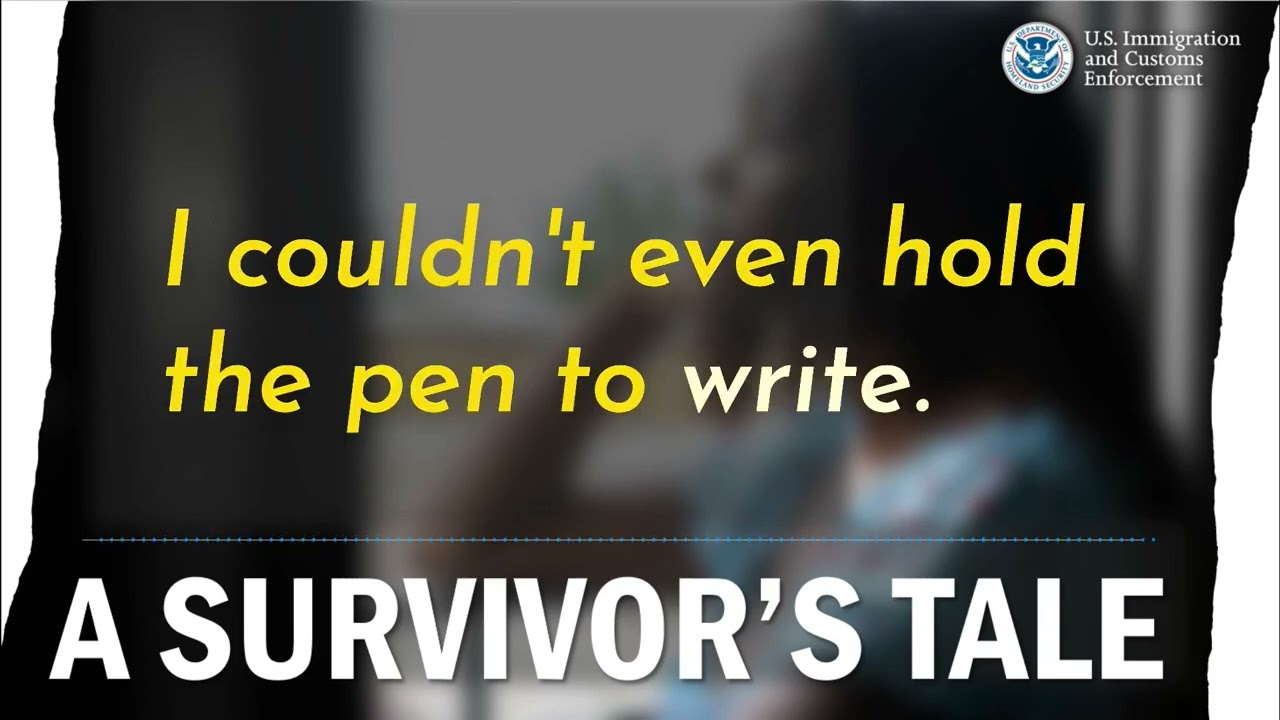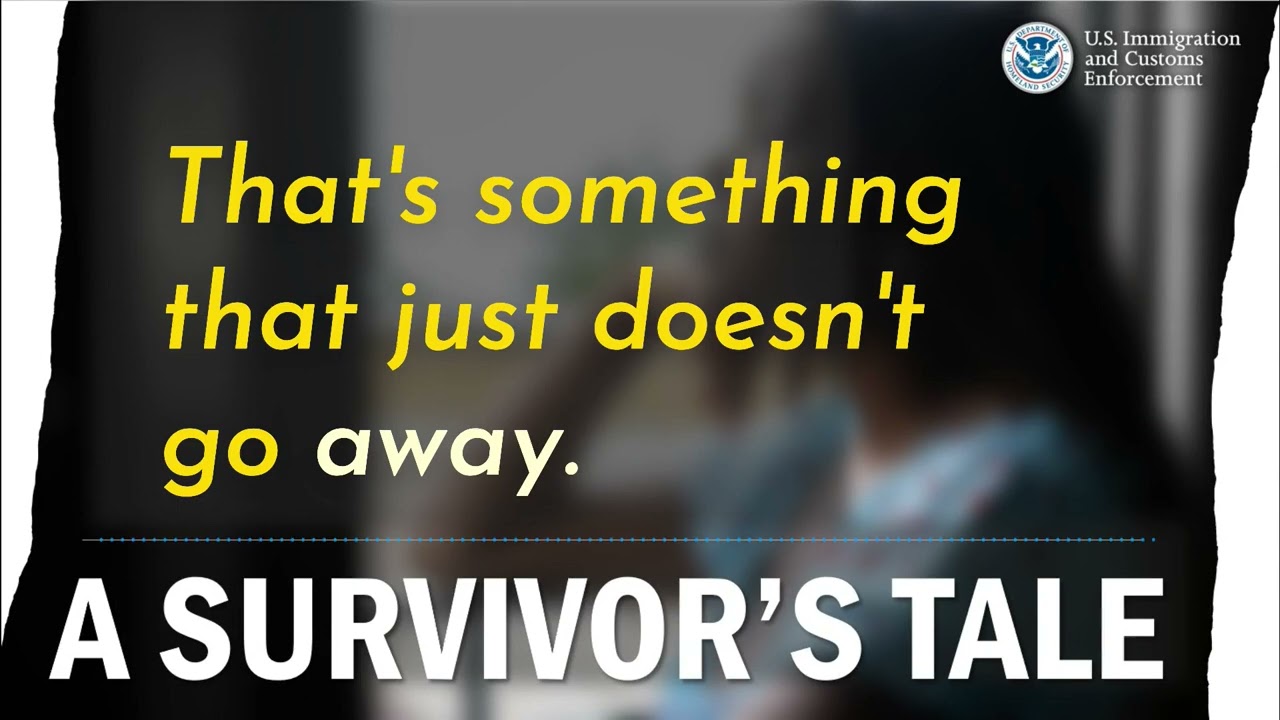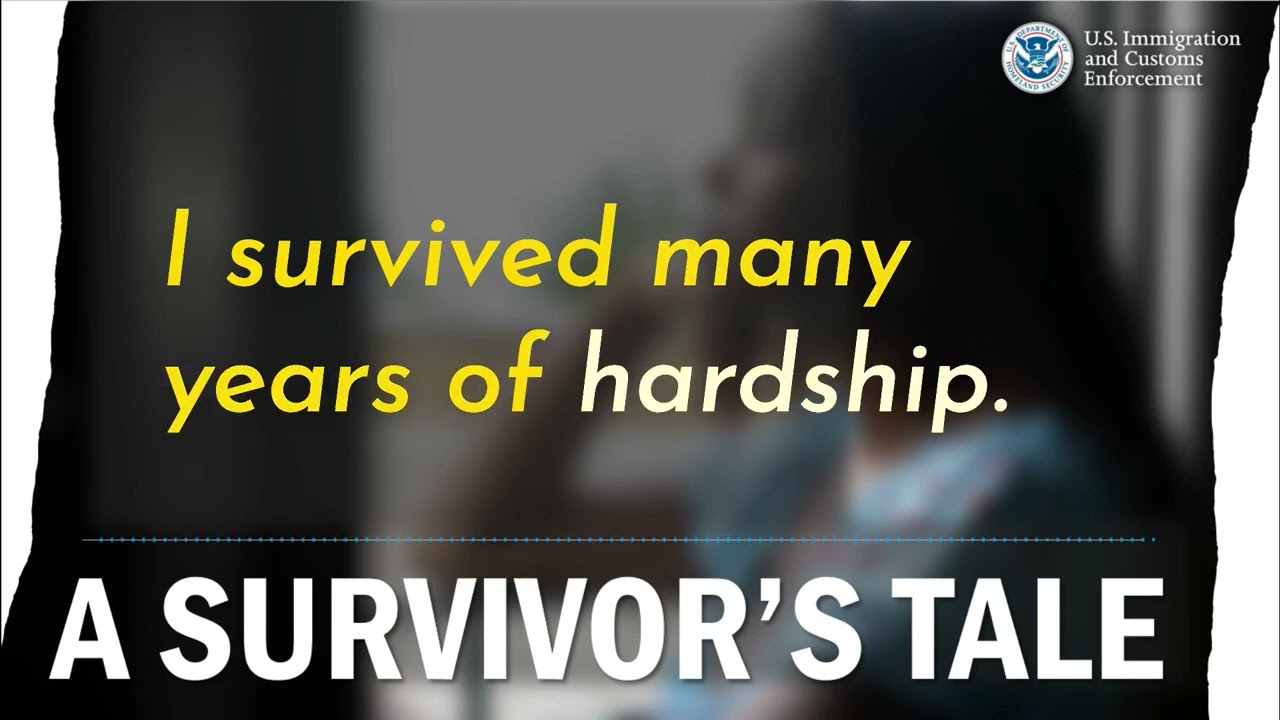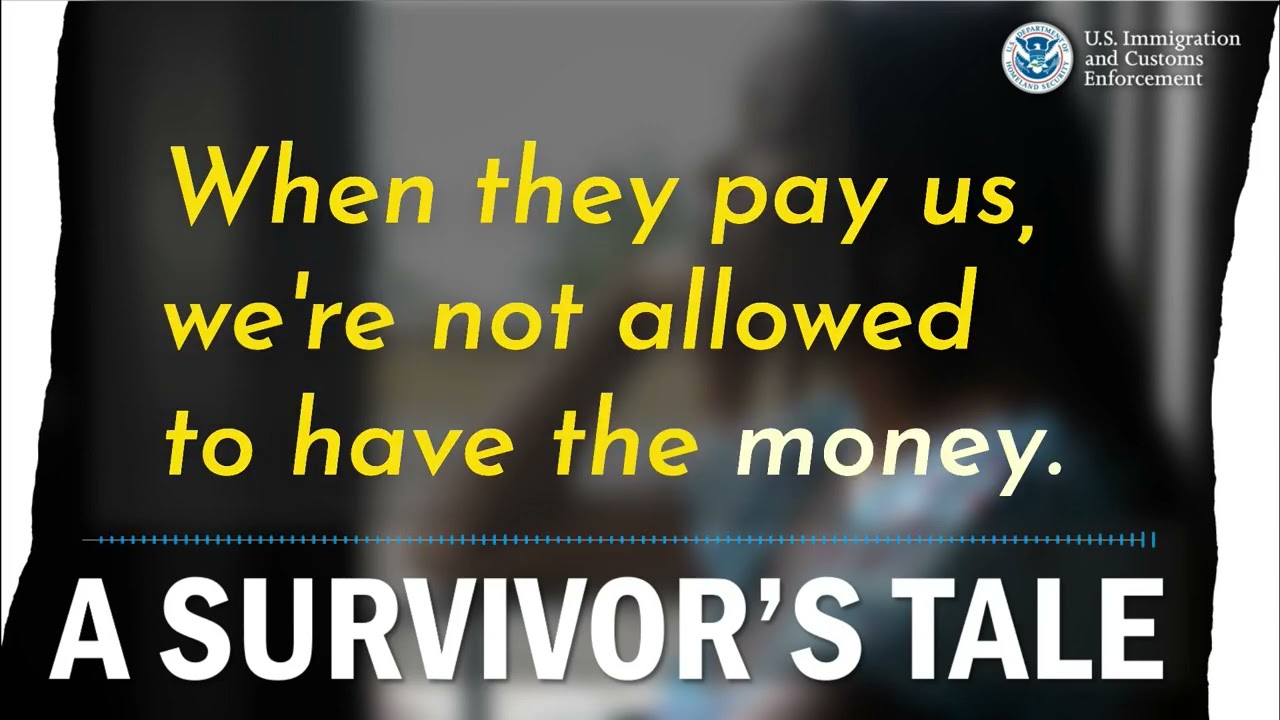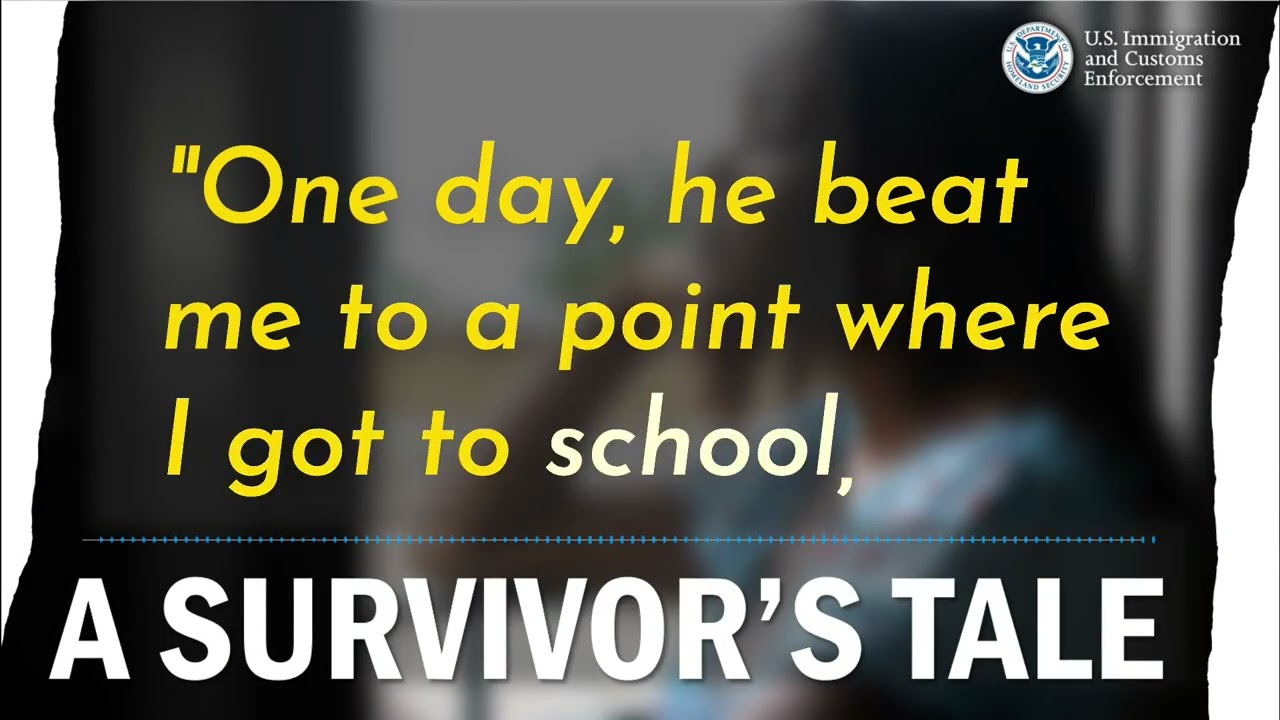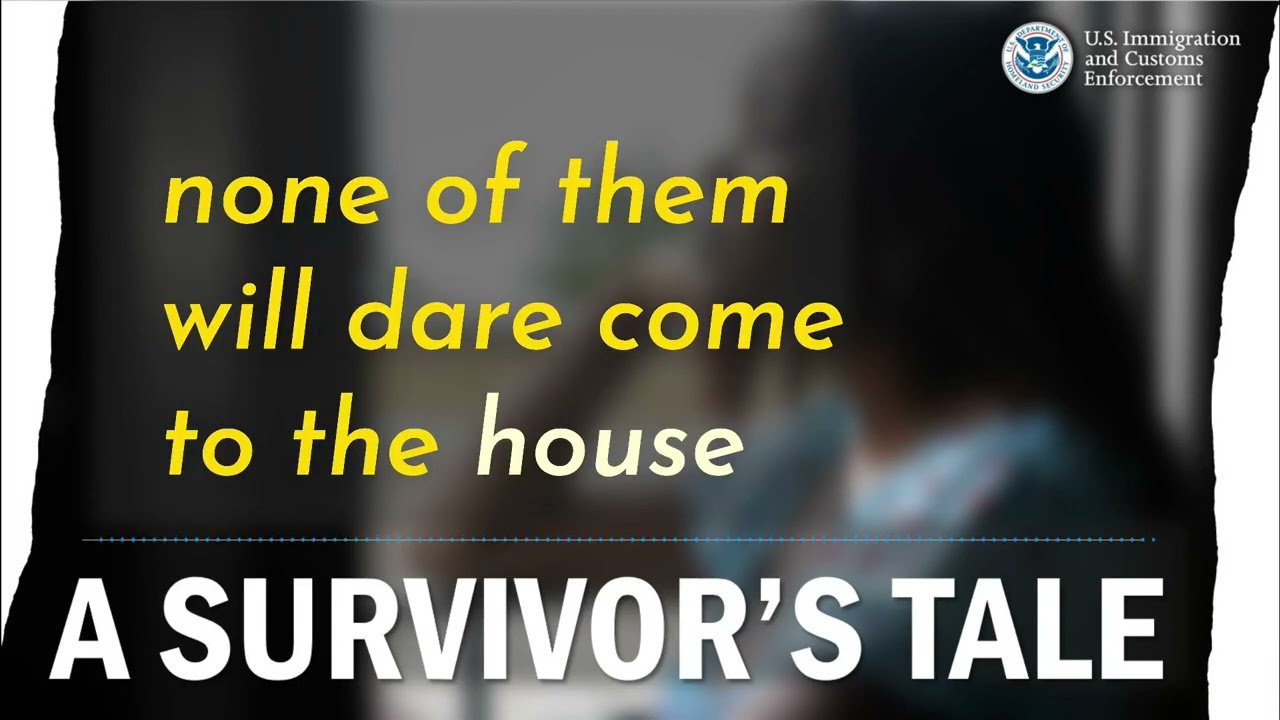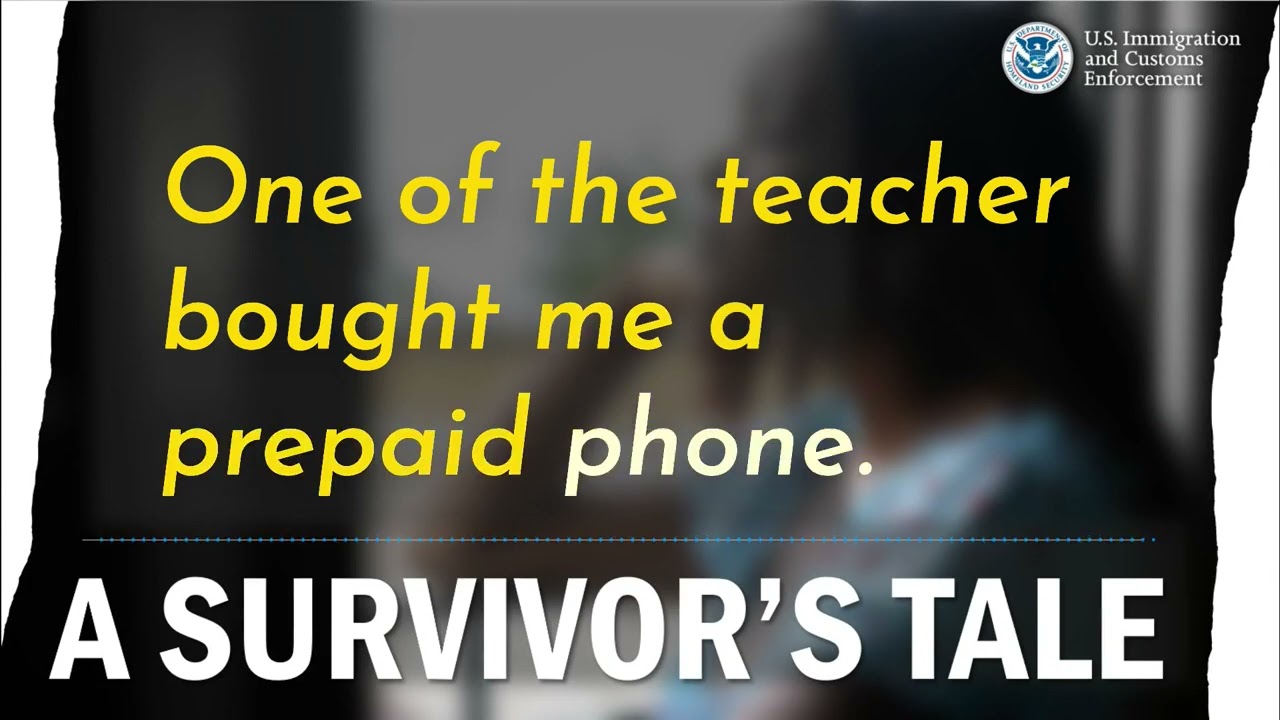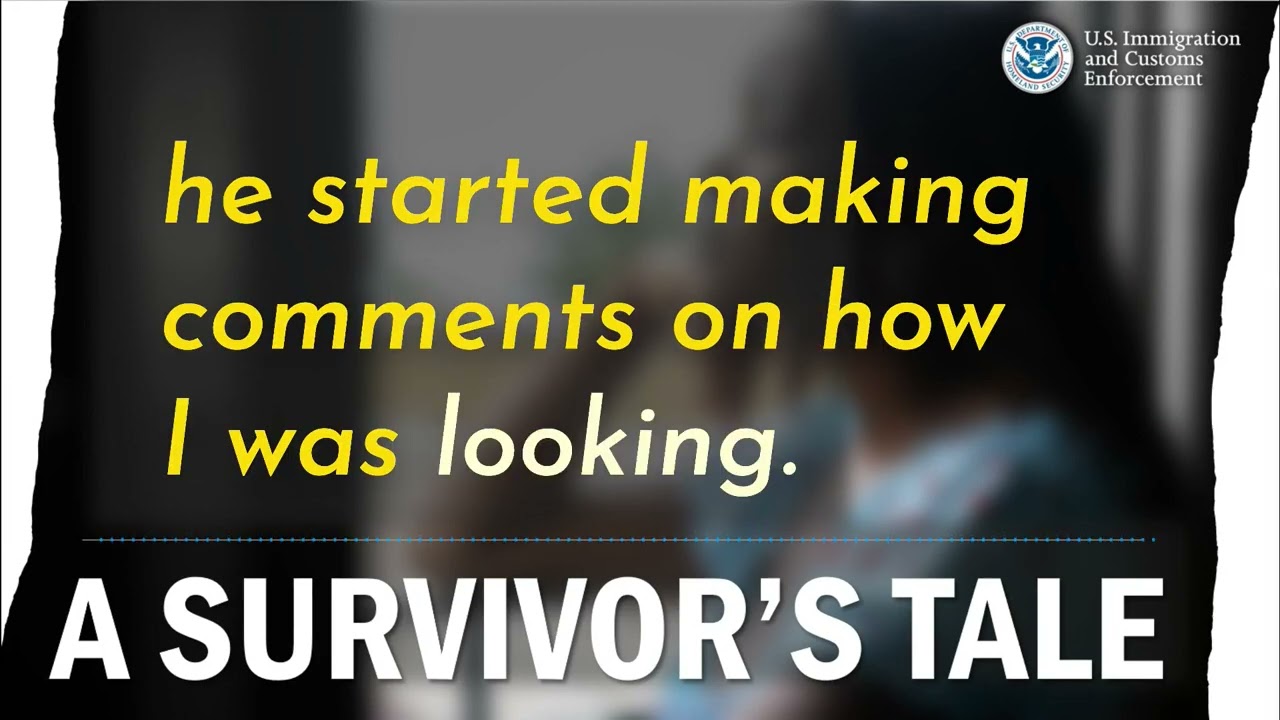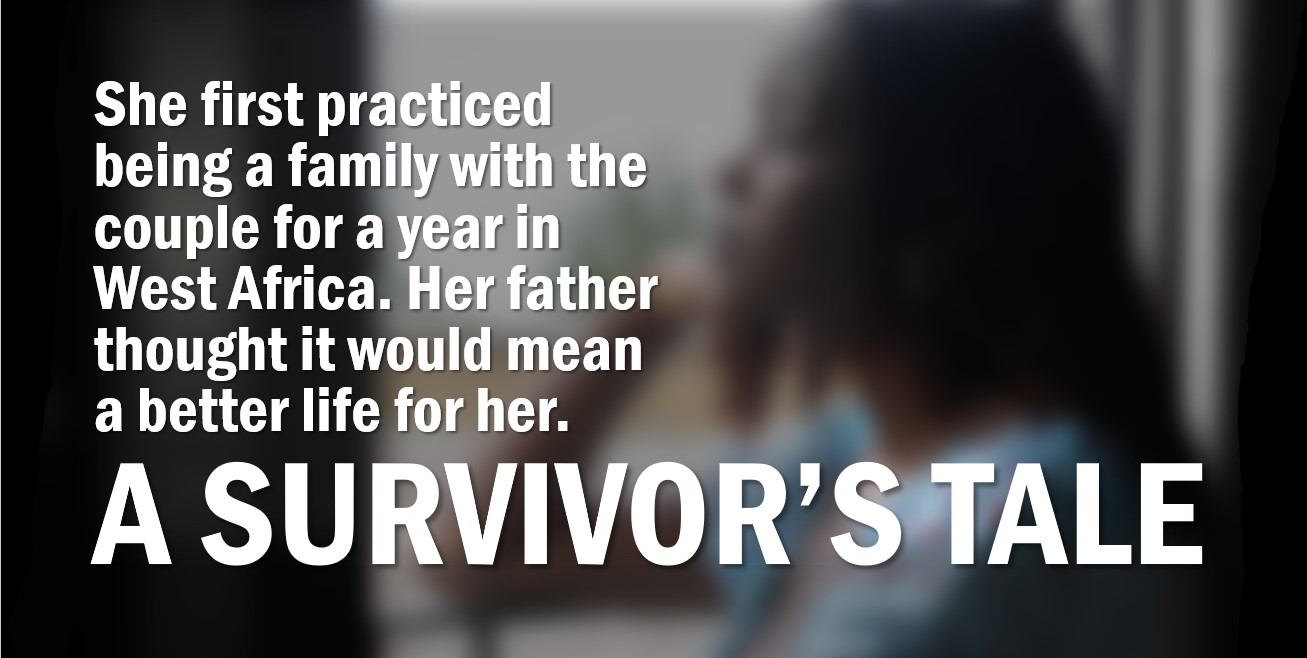
How one young woman survived human trafficking
“In Africa, the tradition is when your elder tells you to do something you don't ask questions. You just follow whatever they tell you and you say OK,” Adamma explained.
“Adamma” remembers the day she landed in the United States after being taken from her native country of Togo: “It was January 25, 2006, at 3:55 (p.m.). That was the worst day of my life.”
Having landed in Detroit in the middle of winter, Adamma and the three other children from Togo she traveled with were not prepared: “We didn’t have boots or coats. It was so cold. No one really told us we should have all these prior to coming,” she said.
What she also wasn’t prepared for was the physical and emotional abuse, the extreme rationing of food and the isolation.
Adamma left Togo for the U.S. with little information as to why she was going. It started with a whole year of “practicing” being a family with a couple introduced to her by her father. “Adamma”, “Mandla”, “Fatima” and “Thulani” were brought into the U.S. carrying passports with false names and dates of birth which claimed they were the biological children of a man who was a distant relative already living in the U.S.
Adamma’s father was convinced that he was securing a better future for his young daughter by allowing her to go to the U.S. The man she was going to live with promised an education and opportunities she would not get in Togo. Adamma didn’t ask questions.
“In Africa, the tradition is when your elder tells you to do something you don't ask questions. You just follow whatever they tell you and you say OK,” Adamma explained.
The man they were going to live with was Jean Claude “Kodjo” Toviave who, in February 2001, left Togo for the U.S., seeking political asylum. His request for asylum was granted in March 2002, and he eventually settled in Ypsilanti, Michigan.
Kodjo had a perfect plan: Bring all four minors to the U.S. under the guise of being his children so he could fraudulently collect welfare checks for each until they were 18 years old. He made each child 5 years younger than they were on their bogus documents, so he had more years to collect the money.
The four victims were regularly beaten with broomsticks, a toilet plunger, sticks, ice scrappers and phone chargers if they failed to obey Kodjo's orders to complete household chores. They were forced to do chores on a weekly and sometimes daily basis, spanning nearly five years. This domestic work included all the cooking and cleaning in the house, hand-washing laundry, ironing Kodjo's suits, shining his shoes, washing and vacuuming his car, babysitting the children of his friends and cleaning his friend's home.
Adamma said she would have to clean people’s houses but was never allowed to keep the money she earned.
“We have to give it to him because he has to buy our clothes, but he wasn't buying them. We weren't getting any clothes,” Adamma said.
In addition to force and threats of force, Kodjo used food and sleep deprivation as punishment.
All four children were severally malnourished and often went to school with bruises and other injuries. The food was regulated because Kodjo wanted them to stay small so they continued to look young.
Child Protection Services (CPS) were called by school authorities several times, yet nothing ever happened to address their situation.
There were so many CPS reports that found no evidence of abuse after a home inspection that teachers started being more pro-active in helping the children.
“Kodjo was so charming and manipulative and some of them (at CPS) ended up admitting that they feared him,” Allen said.
It’s when one of the children landed in the emergency room with a broken wrist in 2011 that HSI Forensic Interview Specialist Amy Allen got involved after receiving a call from a law enforcement colleague asking if she was interested in taking on the case.
But Adamma was finding her voice and started challenging Kodjo’s rules. Five years had passed, and she was 22 years old.
“We think Adamma had aged out to 18, even though that was a fake age that he had assigned her. So, she wasn't bringing any welfare money into the house,” Allen said. “Also, with just her strength of starting to talk back to him, I think he realized he wasn't going to be able to continue to manipulate her for too long.”
Eventually, Kodjo asked Adamma for the house keys and told her to leave.
Adamma knew this was the time to make her move and break free from the abuse.
She used a prepaid phone given to her by one of her teachers and called a classmate.
“I never went back,” Adamma said. Today, Adamma, Mandla, Fatima and Thulani are moving forward with their lives, but the emotional toll it took will likely linger forever.
Adamma spent a few years at the home of her classmate and eventually went to college. Today, she is married with children. But “it was hard for me to learn to trust,” she said.
“She was very quiet, very withdrawn, but very cooperative,” Allen said when she first interviewed Adamma. “She was worried about her immigration status, so I had to reassure her that she was safe and would not be going back to Togo.”
Combating Human Trafficking
Combating human trafficking is a top priority for the U.S. Department of Homeland Security (DHS). DHS is a federal leader in this fight and works with partners at every level to prevent this heinous crime, identify and protect victim and bring perpetrators to justice.
In October 2020, the Center for Countering Human Trafficking (CCHT) was established. The DHS-wide effort integrates the Department’s investigative and enforcement operations, victim assistance, intelligence, outreach and training to effectively respond to human trafficking on a global scale. The CCHT is led by U.S. Immigration and Customs Enforcement (ICE) Homeland Security Investigations (HSI). The CCHT is the first unified, inter-component coordination center for countering human trafficking and the importation of goods produced with forced labor.
HSI plays an integral role in combatting human trafficking by working with its law enforcement partners to deter, disrupt and dismantle the criminal network engaged in trafficking activities. It accomplishes this mission by making full use of its authorities and expertise, seizing assets and eliminating profit incentives, and working in partnership with non-governmental organizations to protect and assist victims and bring traffickers to justice.
Human trafficking generally takes two forms:
- Sex trafficking in which a commercial sex act is induced by force, fraud or coercion, or in which the person induced to perform such act has not attained 18 years of age; or
- Labor trafficking, the recruitment, harboring, transportation, provision or obtaining of a person for labor or services, by force, fraud or coercion for the purpose of subjection to involuntary servitude, peonage, debt bondage or slavery.
In Adamma’s case she and the three other minors were victims of labor trafficking.
Just like many human traffickers, Kodjo was in it for the money. With estimated annual global profits of $150 billion, traffickers victimize an estimated 25 million people worldwide, with 80% in forced labor and 20% in sex trafficking. Many trafficking cases involve workers in agriculture, landscaping, construction, in homes as nannies or domestic workers, restaurants, elder care, massage parlors – essentially, in jobs with low pay and few legal protections in the underground economy and in the service industry.
National Crime Victims’ Rights Week
Since 1981, National Crime Victims’ Rights Week is celebrated every year in April. This week is dedicated to learning about victimization, the effect victimization has on individuals, families, friends and the community, and to promote laws, policies, and programs to help victims of crime. This year’s theme, Rights, access, equity, for all victims, underscores the importance of helping crime survivors find their justice by enforcing victims' rights, expanding access to services and ensuring equity and inclusion for all.
HSI and the Victim Assistance Program
HSI plays an integral role in combatting human trafficking. HSI Special Agents work closely with the HSI Victim Assistance Program (VAP), a central piece of HSI’s victim-centered approach to investigations into crimes of victimization and exploitation.
VAP provides a critical resource to HSI investigations and criminal prosecutions by ensuring that victims have access to the rights and services to which they are entitled by law, as well as the assistance they need so that they can participate actively and fully in the criminal justice system process.
Victim Assistance Specialists (VAS) and Forensic Interview Specialists (FIS) are professionally trained and understand how trauma may impact victims.
Having a VAS and a FIS involved from the start ensures that victims are being treated with respect, dignity and support throughout the investigative process; VAS can help to assess victim needs, coordinate resources and ensure adherence to all victims’ rights; and an FIS provides consultation, coordination and interviews to any potential victims and witnesses, regardless of victim age or ability.
In FY 2021 and to date, FISs have conducted or provided consultation in over 1,872 interviews, both domestically and internationally, and VASs have supported 2,166 victims worldwide.
As the result of the efforts of VAP investigators, Kodjo was sentenced to 135 months in prison in 2013 after having been found guilty on four counts of forced labor. He could be released as early as Sept. 2022 and will likely face deportation to Togo.
How You Can Help
The recognition of human trafficking by others can save a victim’s life and help the investigation and prosecution of traffickers.
